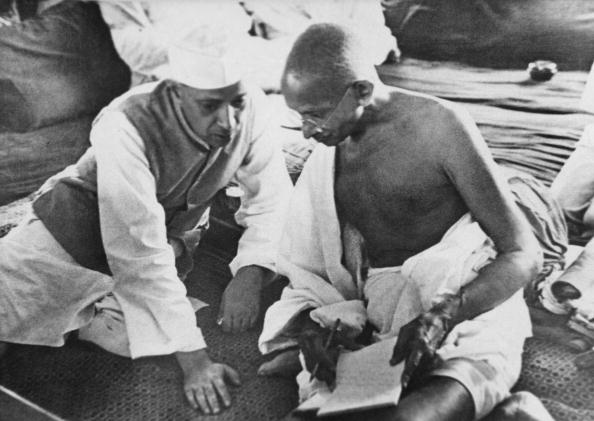Quit India Movement: During World War II, on August 8, 1942, Mahatma Gandhi launched the Quit India Movement (Bharat Chhodo Andolan), often referred to as the August Movement (August Kranti), at the Bombay session of the All India Congress Committee, calling for an end to British rule in India.
As mentioned in the PIB Archives, Mahatma Gandhi said: “Here is a mantra, a short one that I give you. You may imprint it on your hearts and let every breath of yours give expression to it. The mantra is: ‘Do or Die’. We shall either free India or die in the attempt; we shall not live to see the perpetuation of our slavery.”
Remembering the legacy of one of the historic movements of the Indian Struggle for independence, here’s a look at how leaders are commemorating the 80th Anniversary of the Quit India Movement:
PM Narendra Modi & Other BJP Leaders:
Prime Minister Narendra Modi took to Twitter and expressed his gratitude towards our forefathers who took part in the Quit India Movement. In a series of three tweets, check out what the PM wrote:
Senior Leader and BJP president JP Nadda took to Twitter and paid tributes to the martyrs on the occasion of 'August Kranti Diwas', which he called "the symbol of the freedom movement".
Indian Home Minister Amit Shah also took to Twitter and wrote, “Salute to the immortal fighters who laid down their lives in this great sacrifice of freedom.”
Opposition Leaders:
The official Twitter handle of the Congress Party shared a poster and wrote, “Today, let's celebrate the spirit of August Revolution which marks the anniversary of the Quit India Movement.”
In a series of tweets, Congress senior leader P Chidambaram described the significance of the Quit India Movement and how it is the symbol of India’s quest for Independence.
Chief Minister of Odisha, Naveen Patnaik also took to Twitter to embrace the remarkable and historic legacy of the Quit India Movement.
History Of the Quit India Movement (Bharat Chhodo Andolan)
Gandhi, Nehru, and numerous other leaders of the Indian National Congress were detained by the British Government the day after the Bharat Chhodo Andolan was launched. The following days saw disorderly and non-violent protests around the nation.
Japanese forces were en route to India's borders by the middle of 1942. China, the US, and Britain were putting increasing pressure on one another to resolve India's future position before the war was over.
To examine the British Government's Draft Declaration, the Prime Minister sent Sir Stafford Cripps, a member of the War Cabinet, to India in March 1942.
After the war, India was given Dominion status, but the British Government Act of 1935 received few other concessions as a result of the draught. The Congress Working Committee deemed the text to be undesirable and rejected it. Congress and the British Government were much more alienated after the Cripps Mission's failure.
Gandhi took advantage of the Cripps Mission's failure, the Japanese's expansion in South-East Asia, and Indians' overall dissatisfaction with the British. He demanded that the British leave India voluntarily.
The All India Congress Committee met in Allahabad from April 29 to May 1, 1942, to examine the Working Committee's resolution. Gandhi wasn't present at the meeting, but many of his ideas were included in the resolution; the pledge to nonviolence was the most important of these.
The Congress Working Committee reconvened at Wardha on July 14 and decided to give Gandhi permission to lead the nonviolent mass movement.
The All India Congress Committee meeting in Bombay in August was supposed to endorse the Resolution, sometimes known as the "Quit India" resolution.
The All India Congress Committee convened in Bombay on August 7 and 8, 1942, and approved the motion to "Quit India." Gandhi urged people to "Do or Die." Gandhi, members of the Congress Working Committee, and other Congress leaders were detained by the British Government on August 9, 1942, in accordance with the Defense of India Rules.
The Criminal Law Amendment Act of 1908 deemed the Working Committee, the All India Congress Committee, and the four Provincial Congress Committees to be unlawful groups. Rule 56 of the Defence of India Rules forbade the holding of public gatherings. Numerous protests broke out across India after Gandhi and the Congress leaders were taken into custody. In the wake of the "Quit India" campaign, thousands of people died and were injured. Numerous locations called for strikes. More than 100,000 people were detained by the British as they swiftly put an end to many of these protests.
The Quit India Movement brought the Indian people together in opposition to British rule. Gandhi resumed his struggle and embarked on a 21-day fast after being released in 1944, even though the majority of protests had been put down by that point. Britain's position in the world had drastically changed after the end of World War II, and the push for independence could no longer be dismissed.
(Parts of information in the report have been sourced from the official website of Open University of United Kingdom and Quit India: by Mahatma Gandhi, edited by R.K. Prabhu U.R. Rao.)


